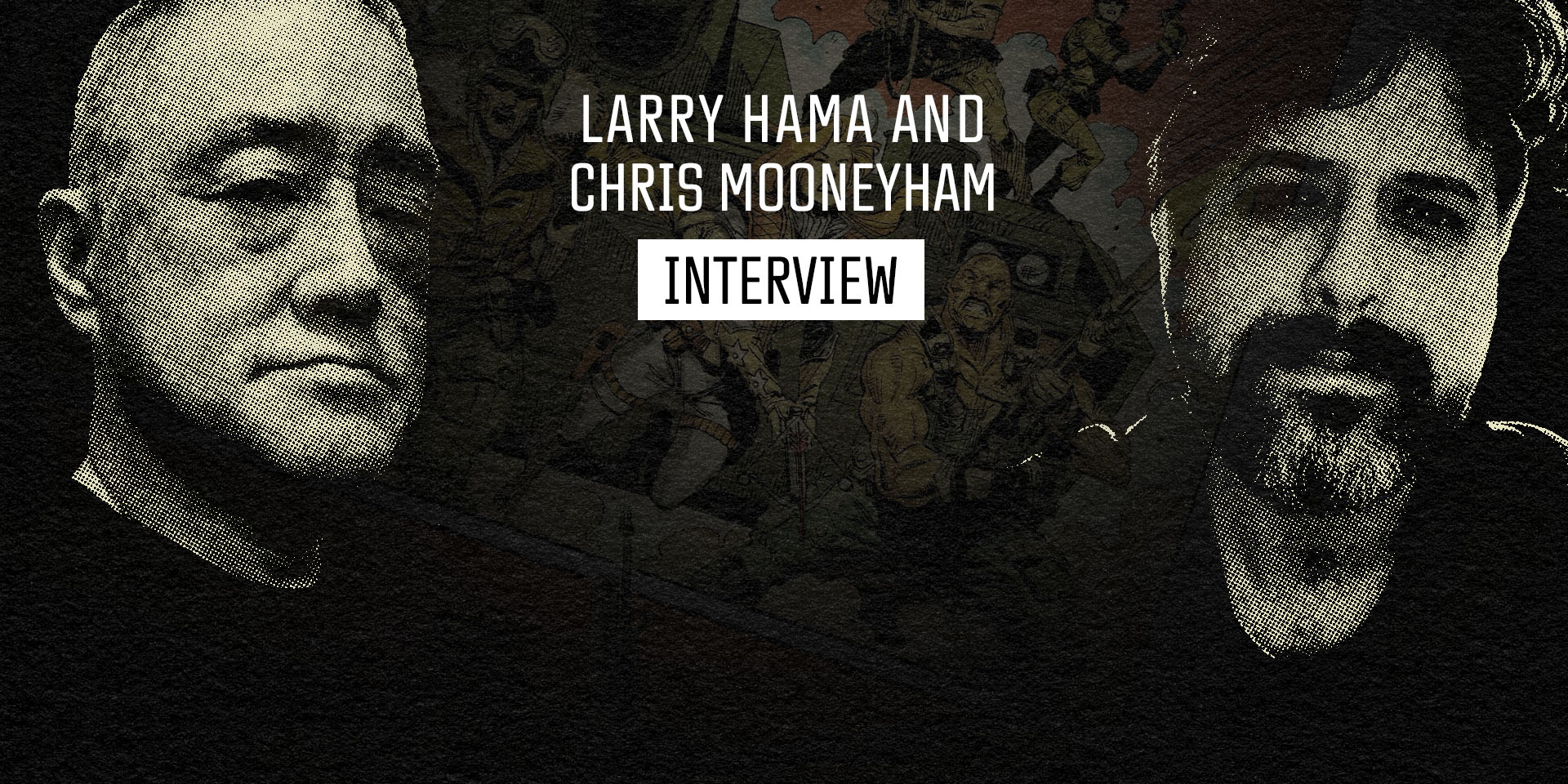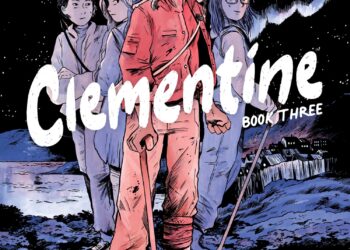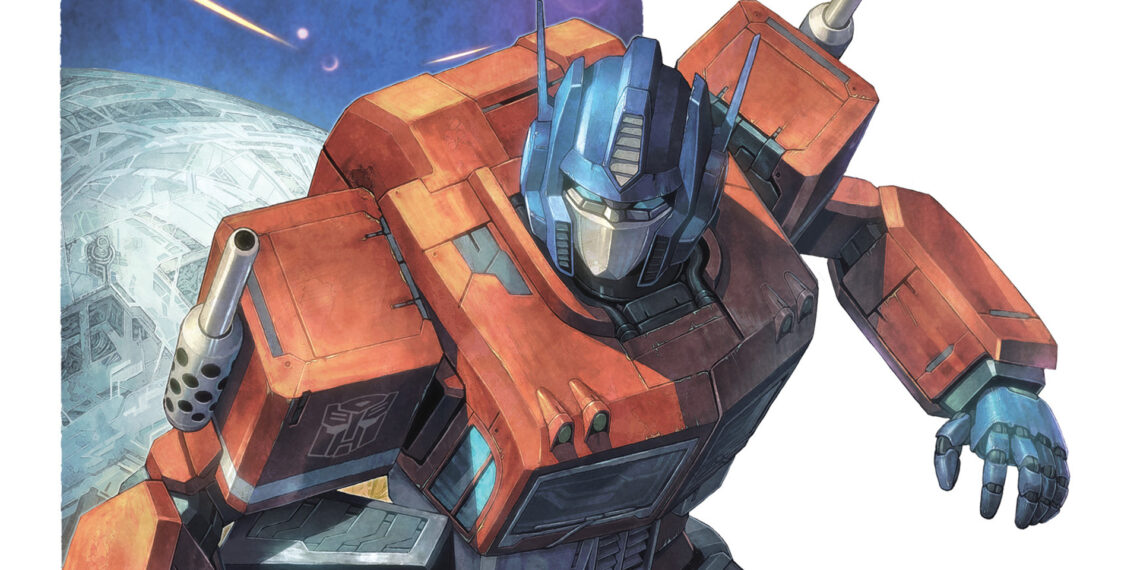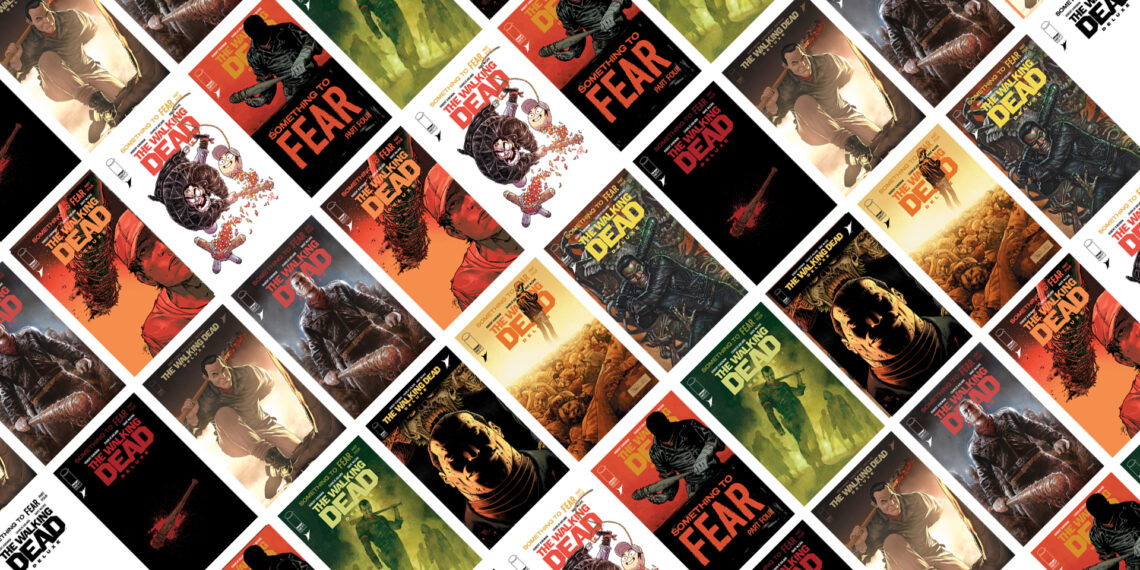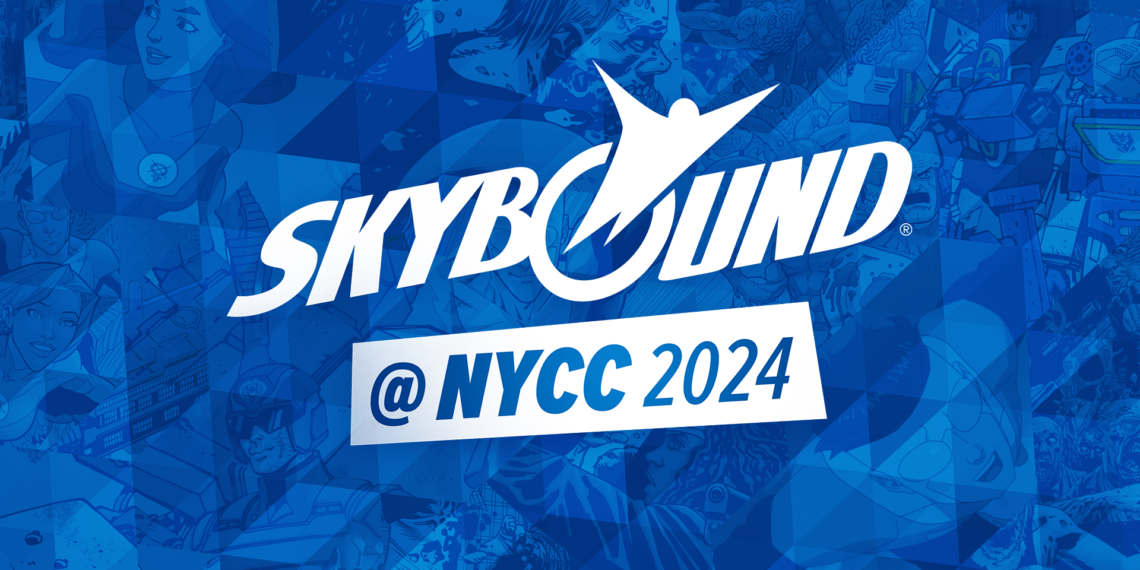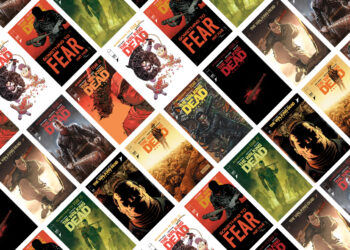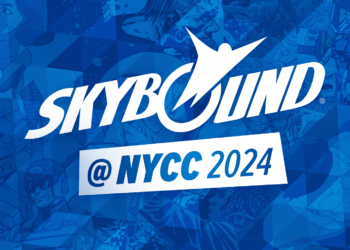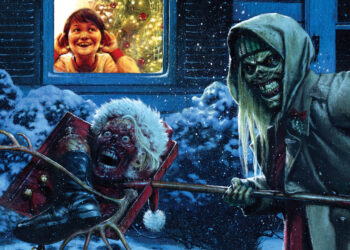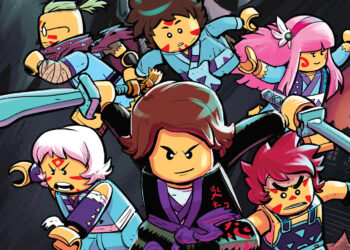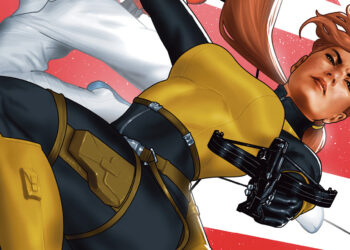It’s damn near impossible to think of another writer who’s contributed as much to a single comic book as Larry Hama has to G.I. Joe: A Real America Hero. Let alone a creator who’s guided a book through four decades and three different comic publishers. But with Skybound’s G.I. Joe: A Real American Hero #301 continuing the legacy Hama began at Marvel back in 1982 – aided to no small degree now by fan-favorite artist Chris Mooneyham – we thought there was no better time to chat with both gentlemen. Here’s what they had to tell us about their work on the beloved title…
Larry Hama
There aren’t many comics creators successful enough to have penned two long runs of the same title at two different publishers, with a third run of G.I. Joe now underway at Skybound. What’s the secret to having a career such as yours?
Decades ago, Marvel editor Mark Gruenwald told me that my comics were “old-fashioned.” When I asked what he meant by that, he replied “the characters are likeable, and the stories make sense.” It’s probably as simple as that.
What did you first find appealing about the title when you began writing it for Marvel?
I didn’t. A military comic was the last thing I wanted to do. I got into the business because I wanted to do funny animals. I’m a “duck man” at heart. I tried getting writing work for years, and even after I was a full editor at Marvel, I couldn’t get a single Marvel editor to give me any writing work. When Hasbro came to Marvel looking to have a G.I. Joe comic done, every contract writer, and non-contract writer turned it down. I was actually the last person they asked, and I took it because I wanted to get my foot in the door. If they had offered me Barbie, I would have taken it – and I would have given it my best shot.

What do you think accounts for the continued popularity of G.I. Joe? Why does it remain so iconic?
The core fantasy is camaraderie and loyalty. Very powerful fantasies for kids. And the female characters don’t stand around with their palms nailed to their foreheads. They are just as capable as the male characters and are treated equally within the group. A surprising number of girls were reading the title. The writer Susan Faludi interviewed me for an article in Esquire and told me that she was the only girl in a family of brothers, who were all older, so she got their hand-me-downs, which included comics. That’s how she started reading G.I. Joe.
As a Vietnam War veteran you brought a much-appreciated level of realism to your editing of Marvel’s The ‘Nam. G.I. Joe of course is a very different military title. How do you balance the book’s fantasy and reality? How do you approach grounding it while maintaining its escapism?
Well, there are a lot of sci-fi elements to G.I. Joe, and the costume designs and vehicles are more superhero than anything else. So, there is an automatic separation from reality. I tried to keep the conduct of the missions as realistic as possible under those circumstances. One veteran told me that I taught him how to set up an L-shaped ambush, and that impressed the hell out of his instructors at infantry AIT. I also tried to keep the relationships between the characters firmly planted in the real world.
Who are your favorite G.I. Joe characters?
That’s like asking who your favorite children are. To me, the core characters in the ongoing story are Snake-Eyes, Scarlett, Storm Shadow, and Stalker.

Which ones are the most fun to write now? Are they the same ones you most enjoyed writing in past years?
If you hunker down and nail the characters, they all are fun to write. When characters are vague or arbitrary, it’s like “Who cares?”
Given that technology is forever advancing, is it ever challenging to keep up with the latest military tech or conceive of future tech for the characters?
I’ve always had to do a lot of research. By the time I started writing the book, my military experience was ten years out of date. A lot of the jargon had become obsolete. The SOPs changed, as did the uniforms and BDUS, and weapons, and even doctrine. I had lots of help.
How would you describe your first story arc on Skybound’s G.I. Joe?
I’m very bad at describing my own work. I’m not about plots, but about characters. I try to keep the characters as consistent as possible, and that is made easier by the fact that they are based on people I know, so I have living breathing reference. If I write a piece of dialog and I try to imagine the person I based the character [on] saying it, and it doesn’t click, I know it’s wrong. Also, I don’t think in “arcs.” To me, it’s all one continuous story that began in 1982 and is still developing.
How far ahead do you plan your stories? Can you tease us about what will follow your first arc?
I write page by page. I do not know what’s on page five until I get to page four. For the entire Marvel run of ARAH there were no coming attractions because nobody knew what was in the next issue. I find that if I can surprise myself, then the reader will be surprised as well. Half of what I read or watch is predictable because the writer knew the ending and wrote towards it. I try to avoid that.
What is your collaboration with Chris Mooneyham like? How would you describe Chris’s work?
Exciting, well-drawn, and clear storytelling. What more can I ask for. Also, the ACTING is good. So many artists out there these days can draw like Michelangelo but what they draw are beautiful emotionless mannequins. If we can’t connect emotionally with the characters, then what’s the use?
What else are you working on these days?
Five graphic novels, and three multi-media projects I can’t talk about.
Chris Mooneyham
When did you first discover G.I. Joe?
Oh, man, I have no idea, really. I can tell you that I didn’t start paying attention to G.I. Joe until I saw a few Mike Zeck covers, after my eyes were opened to all kinds of books/artists/art styles during my time at The Kubert School. So, sometime between 2007-2010.
Were you a fan of the comics or cartoons? If so, what were your favorite issues or episodes?
Again, I can’t really speak to this one. However, since coming aboard, I’ve been going through the original Marvel years, and am quite enjoying it.
Were you a fan of the toys?
Not especially. I hate to say this (and keep saying it, haha), but G.I. Joe was just before my time, so by the time I was of age to get into something like it, I had already found a different avenue for my childhood fantasies. I think my older brother maybe had one or two figures? Couldn’t tell you who they were to save my life, though. I might even be making up that he had them!
How did you come to work on Skybound’s G.I. Joe?
Our editor, Alex Antone, got in touch with me after Riley Rossmo suggested me for the book.
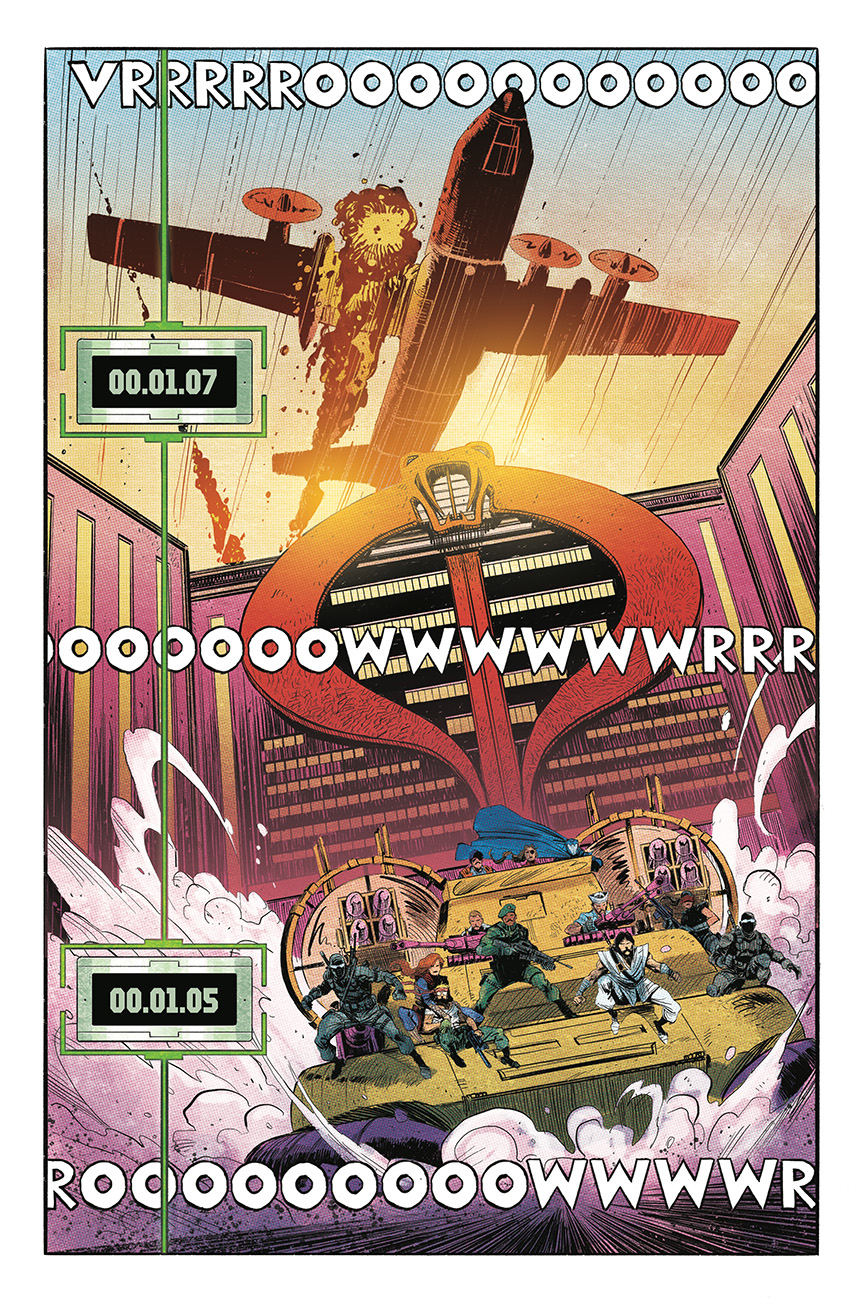 Could you describe your collaboration with Larry Hama? Does his expertise on the title make it an especially rewarding experience?
Could you describe your collaboration with Larry Hama? Does his expertise on the title make it an especially rewarding experience?
One time, I made the mistake of questioning something he’d written. I shouldn’t have done it then, and I’ll never do it again. This is his book, and these are his characters; he’s The Godfather. But, he is nice enough to let me play with them.
Who are your favorite G.I. Joe characters and why?
I hate to give such an obvious fanboy answer, but Snake-Eyes is too cool. Ninja-Commando. ‘Nuff said.
Who are the most fun to draw?
Again, Snake-Eyes. Also Cobra Commander and Serpentor Khan. I’m really looking forward to Destro and Baroness, at some point.
How would you describe the book’s first story arc?
Challenging.
You have a great ability to take licensed characters and properties and make them your own. How would you say you’ve done that with G.I. Joe? What do you personally respond to and try to highlight in your work on this title?
Thank you. I try to put my own stink on everything I touch. Sometimes it works, and people like it, other times it doesn’t, and people hate it. Mostly, I just try and take what I think is cool and put it into my work, like every artist either does or should do. However, with G.I. Joe being a toy line, too, it’s a little harder to do that. The designs are the designs, and they have to be right… or mostly right. I’ve had my share of edits, post ink, haha.
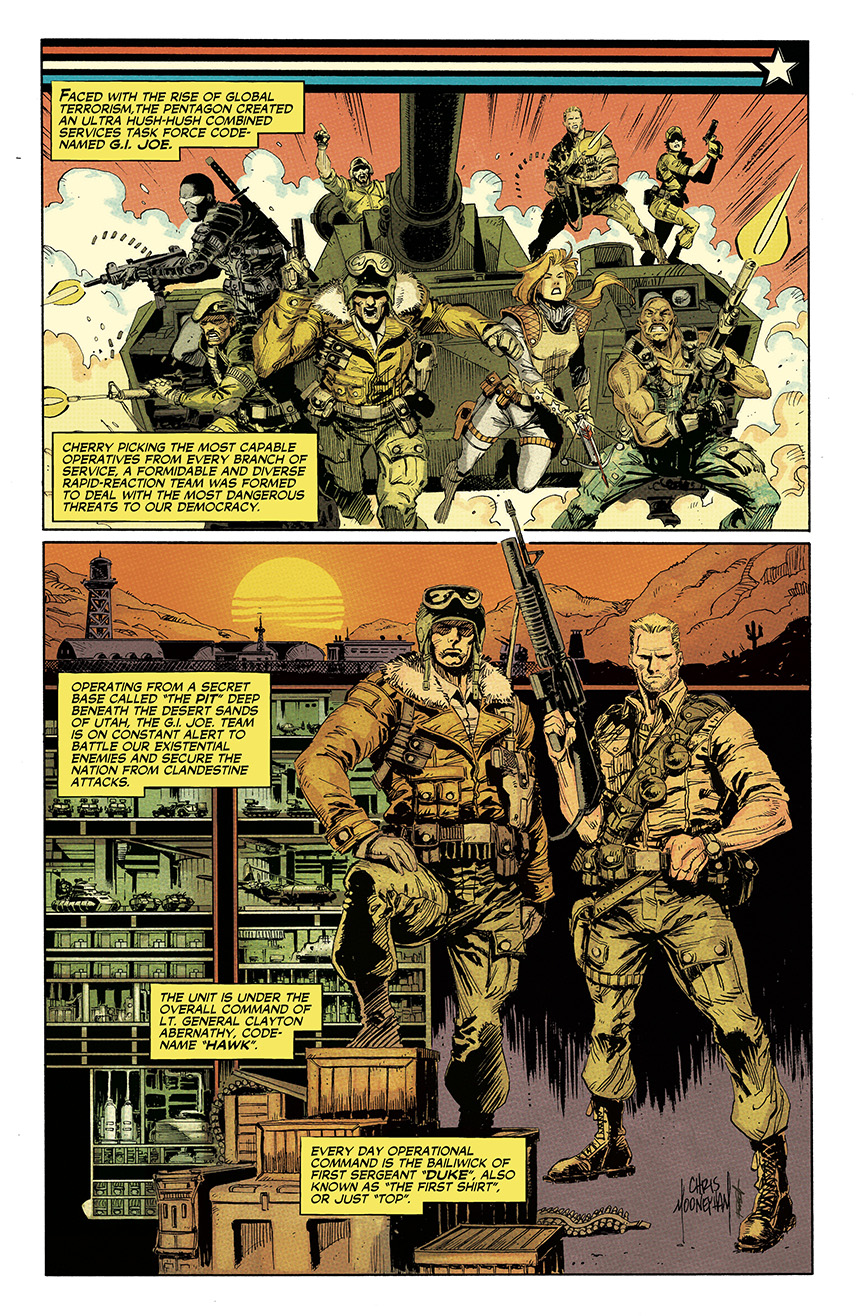 How do you balance the book’s grit and escapist fantasy in your art?
How do you balance the book’s grit and escapist fantasy in your art?
Luckily, grit and escapist fantasy are two of my specialties! It’s like any other book, really: a soap opera with lots of action. It’s punching up the crazy moments and dialing it down for the serious ones. I liken this book to Chris Claremont’s classic run on The Uncanny X-Men. The ridiculousness of the world and the stakes are juxtaposed with very real character moments with high melodrama throughout, which makes for a lot of interesting things to draw.
What else are you working on right now? What’s next for you?
G.I. Joe has me at full attention, for the moment (see what I did there? Please hold your applause). Ideally, I’d like to be on it long enough to make an impact on the book.




